
Sustainability & Brand Marketing - part 3
3 - Cause marketing and brand activism: mutually beneficial for a brand and for a cause – if done right.
This report provides beauty marketers with strategic frameworks, concrete tools and illustrative examples to improve the efficiency and relevancy of sustainable marketing claims by connecting them with what the brand stands for.
Conversely, it also highlights that what the brand stands for should increasingly integrate the sustainability imperative.
1 - Brand purpose: connected yet not the same as sustainability.
2 - Brand equity: the reciprocal contributions between sustainability claims and brand value.
3 - Cause marketing and brand activism: mutually beneficial for a brand and for a cause – if done right.
part 3 - Cause marketing and brand activism: mutually beneficial for a brand and for a cause – if done right.
Brands are now expected to share what they stand up for, beyond what they stand for
Although CSR has been grounded within business operations, recently, the stakes have gotten a lot higher. Companies / brands are increasingly expected to join or create a movement.
Ex. Launched in March 2020 in partnership with the NGO Right To Be (formerly Hollaback!), L'Oréal Paris' Stand Up Against Street Harassment global initiative has provided training on how to safely intervene in instances of street harassment with Right To Be's 5Ds methodology. L'Oréal Paris has accelerated its commitment to combating street harassment by aiming to train 1.5 million people by the end of the year 2022.
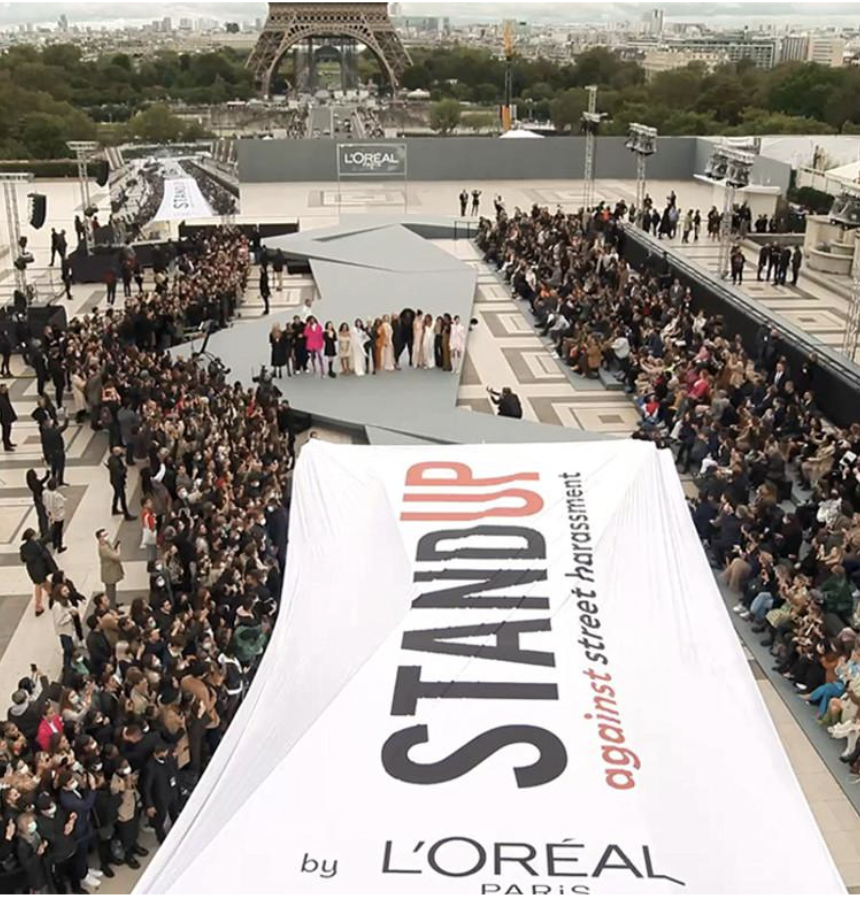
What is cause marketing?
Cause Marketing is a type of Marketing initiative, crossed with Corporate Social Responsibility and Public Relations, in which a company’s promotional campaign has the dual purpose of increasing its sales and image while bettering society.
It often involves the cooperative efforts of a for-profit business and a non-profit organization for mutual benefit.
While there are differences in where the terms originated, the definition of “cause marketing” is the same as “cause-related marketing” which originated in the 1980’s.
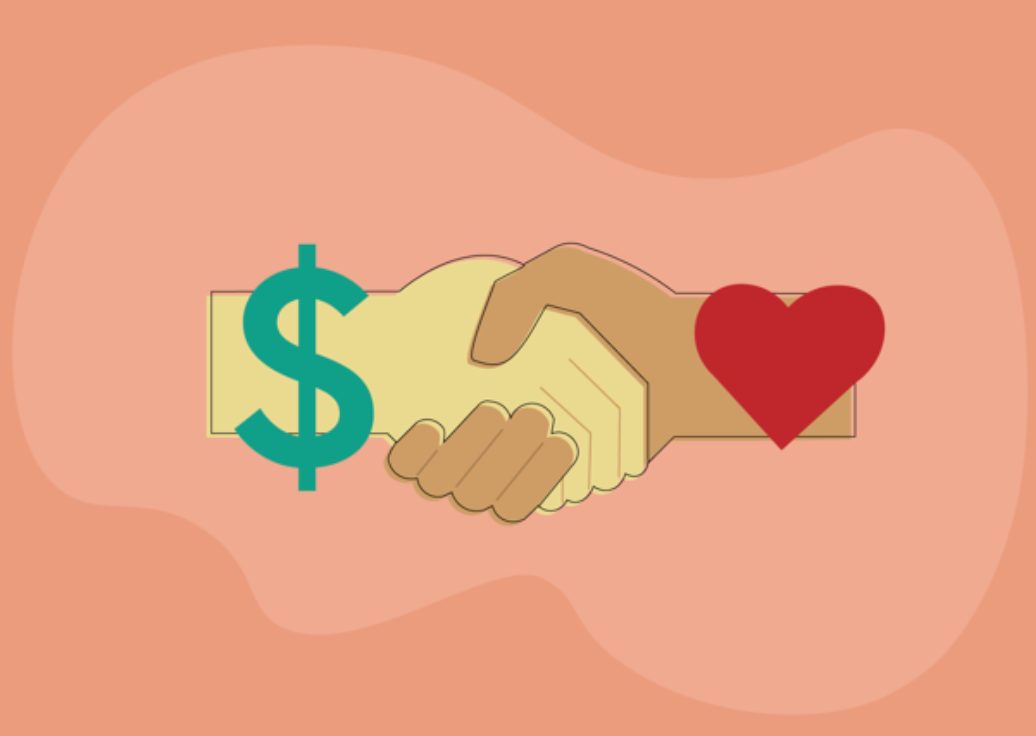
While “You buy. We’ll give” cause marketing campaigns remain popular (and can even be a business model, Toms Shoes* , Who Gives a Crap), there are other forms of cause marketing which are not triggered by a purchase.
For ex: Tom Shoes gave a pair of shoes to a child in need for every post to Instagram of a barefoot photo accompanied by the hashtag #WithoutShoes.
“One Day Without Shoes” still is a national US day (May 10th).
*In 2007 Toms Shoes launched on a one for one donation model. Since 2019 Toms has gone from donating shoes to donating profits.
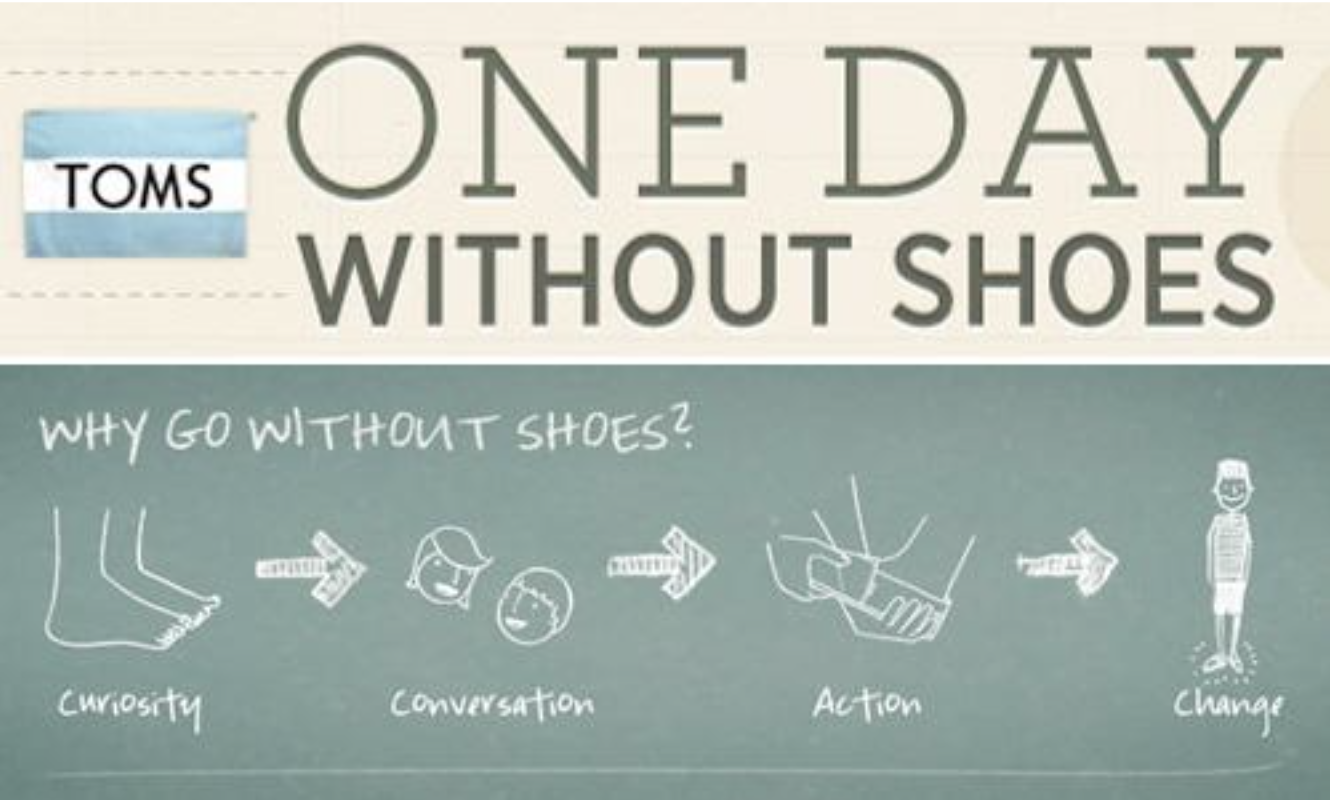
What is NOT cause marketing?
Corporate giving (philanthropy)
- Cause marketing aims to get customers involved in the effort rather than the company supporting a cause alone.
- Cause marketing is not necessarily based on a donation, whereas Philanthropy generally involves a specific donation that is tax-deductible.
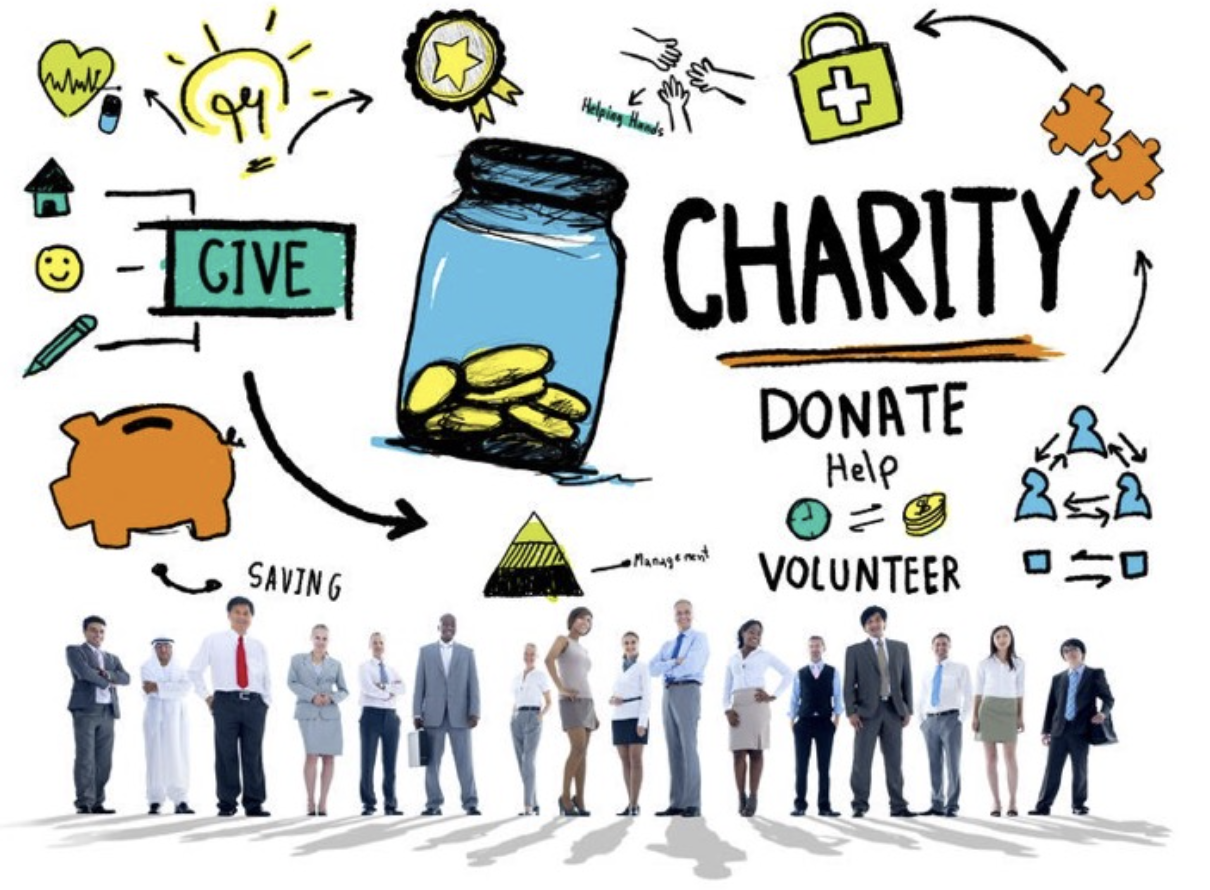
Community Volunteering
Coordinated, company-wide volunteering may be good for team-building and employee retention. But even when employees volunteer while wearing company-branded shirts, the activities are usually not visible enough to impact consumer preference at scale.

What is brand activism?
Brand activism consists of business efforts centered on a brand that aims to “promote, impede, or direct social, political, economic, and/or environmental reform or stasis with the desire to make improvements in society” (Sarkar & Kotler, “Brand Activism: From Purpose to Action,” 2018)
Also, brand activism is defined as “the act of taking a stand on controversial social or political issues for which society has yet to reach consensus” (Mukherjee and Althuzien, 2020).
The main difference between cause marketing and brand activism is that the latter is driven by justice, with the aim to shape policy debates and reform the system.
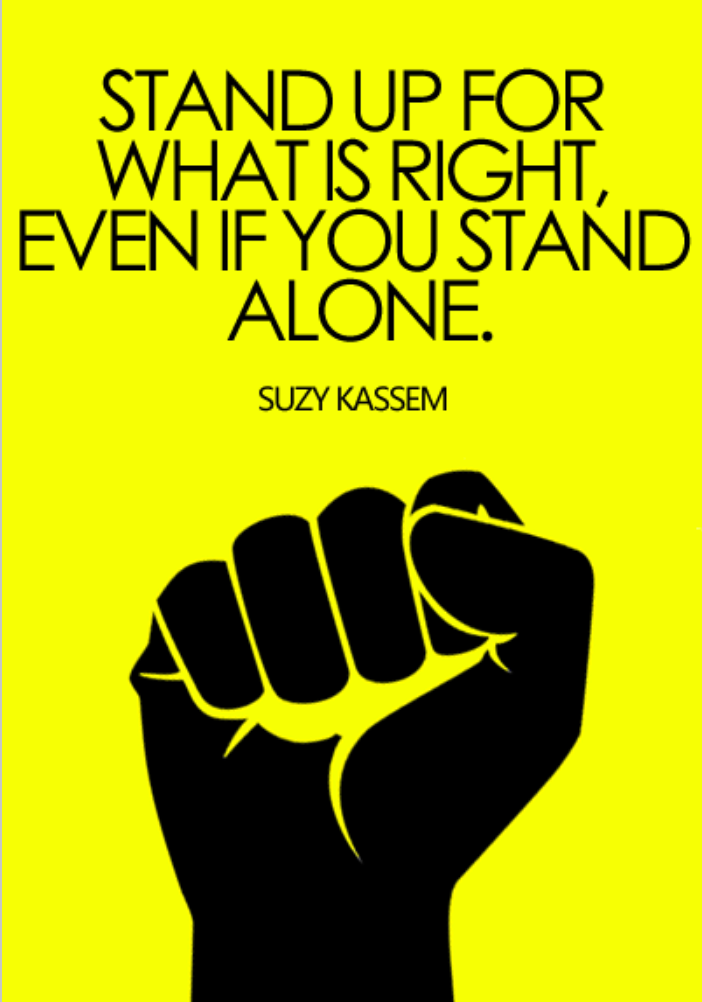
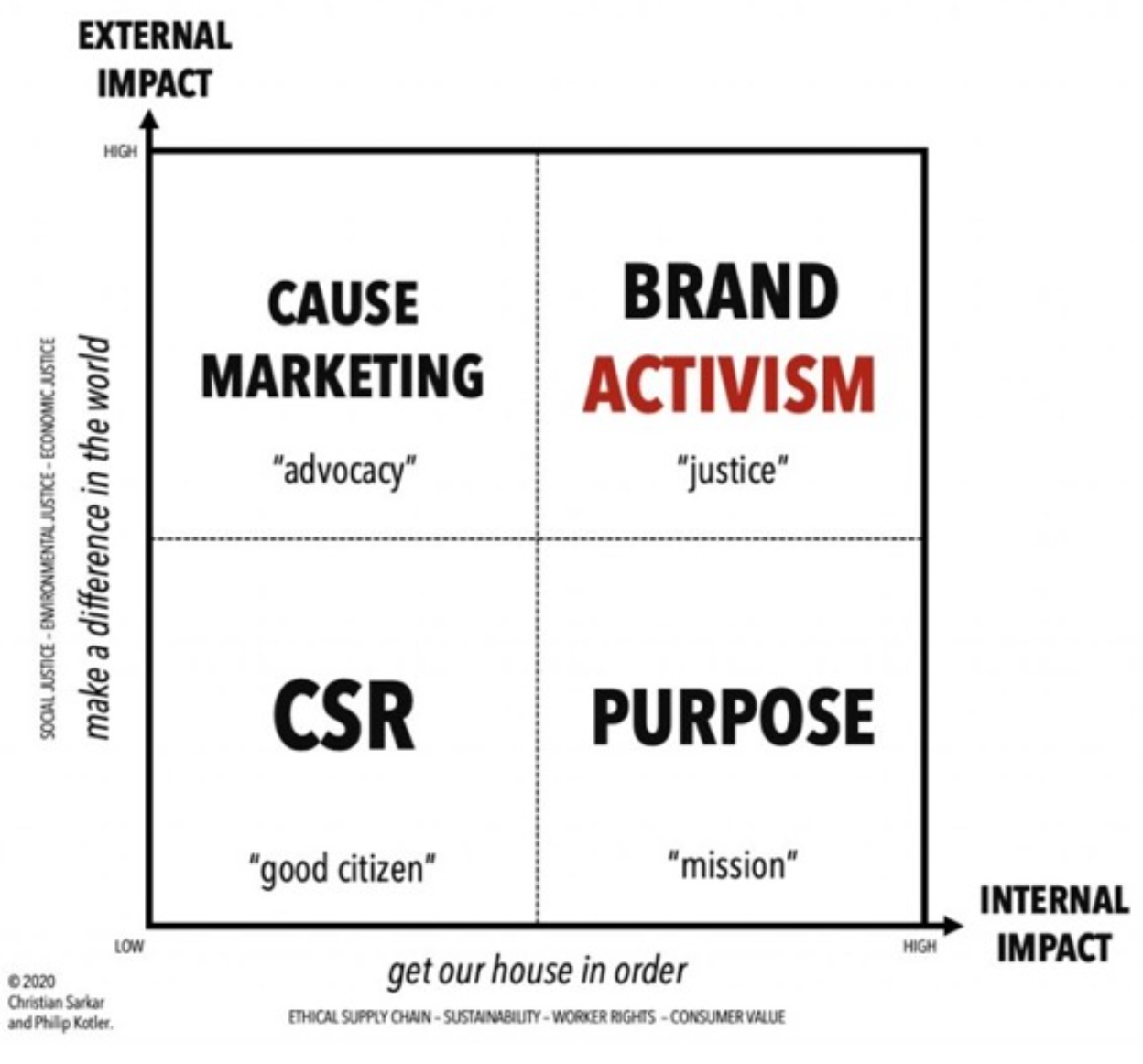
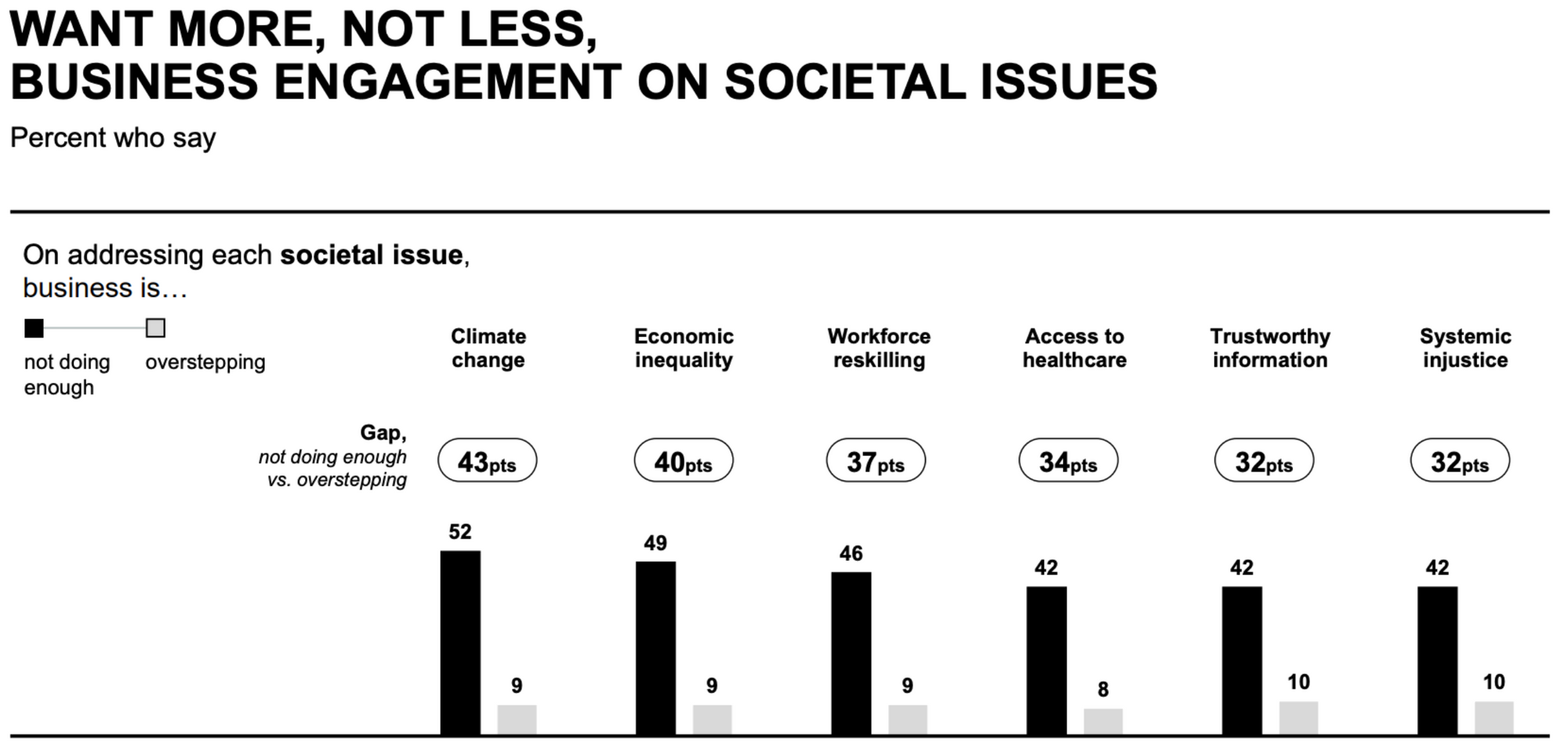
Benefits* of cause marketing and brand activism
- Loyalty
- Engagement: employees, consumer segments, tribes,... ++ building a brand community around shared values and interests.
- Image
- Social and environmental impact. For ex. a company can partner with an environmental organization to plant a tree for each product sale to offset its carbon footprint.
- Awareness
- Differentiation
- Communication ROI (emotional connection with audience, earned media through advocacy, additional channel & touchpoints,…)
* for both parties in case of partnership with a non-profit

Cause marketing and brand activism have similar benefits, yet they play out differently.
Brand activism has more of an asymmetric effect on consumer attitudes, intentions, and behavior. When brands engage in controversial activism, they are taking a risk but aiming to resonate more with their consumer and market (study by Mukherjee and Althuzien, 2020).
Cause marketing is often more directly tied to purchases and to the products than brand activism.
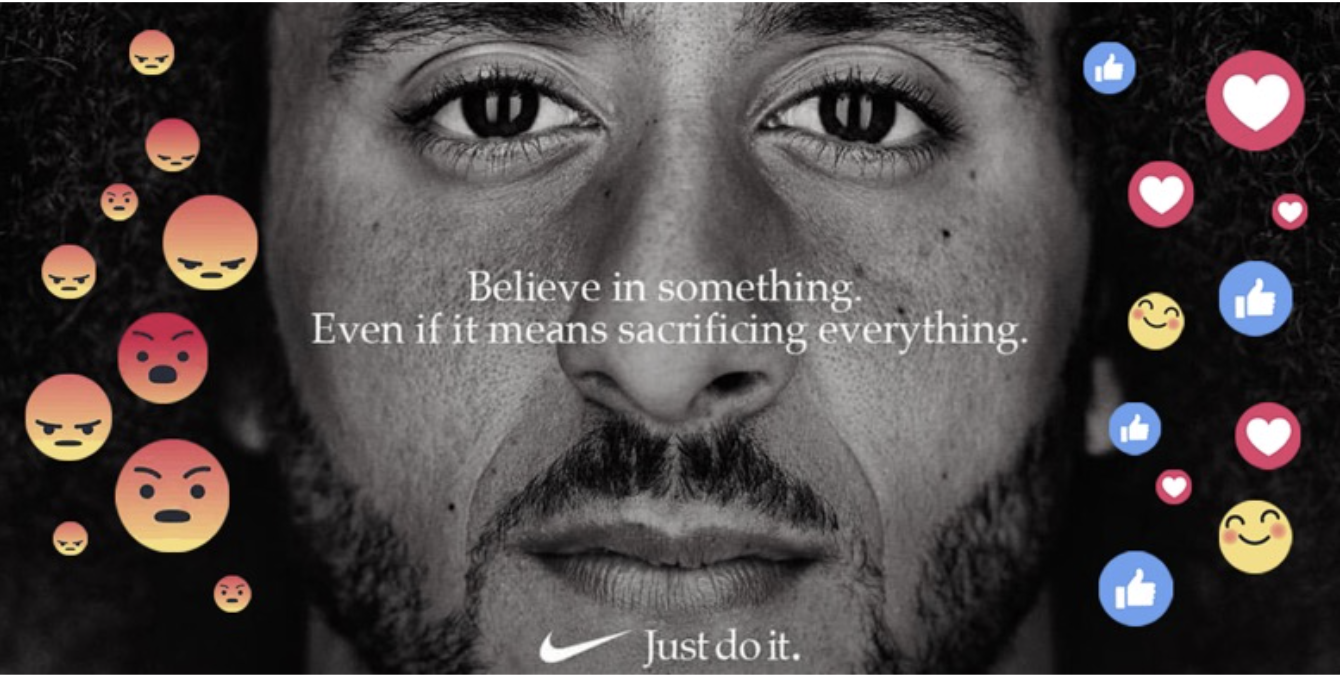
Risks and constrains of cause marketing and brand activism
In June 2020, in response to the outpouring of love and donations from beauty brands during the BLM (Black Lives Matter) protests, Uoma Beauty CEO Sharon Chuter launched the "Pull Up or Shut Up" IG campaign to urge brands to share the number of black employees working in their companies within 72-hours.
Chuter warned brands that they need to do more than simply issue a public statement condemning racism. As part of the campaign, she urged consumers to stop buying from their favorite brands until they take part in the challenge.
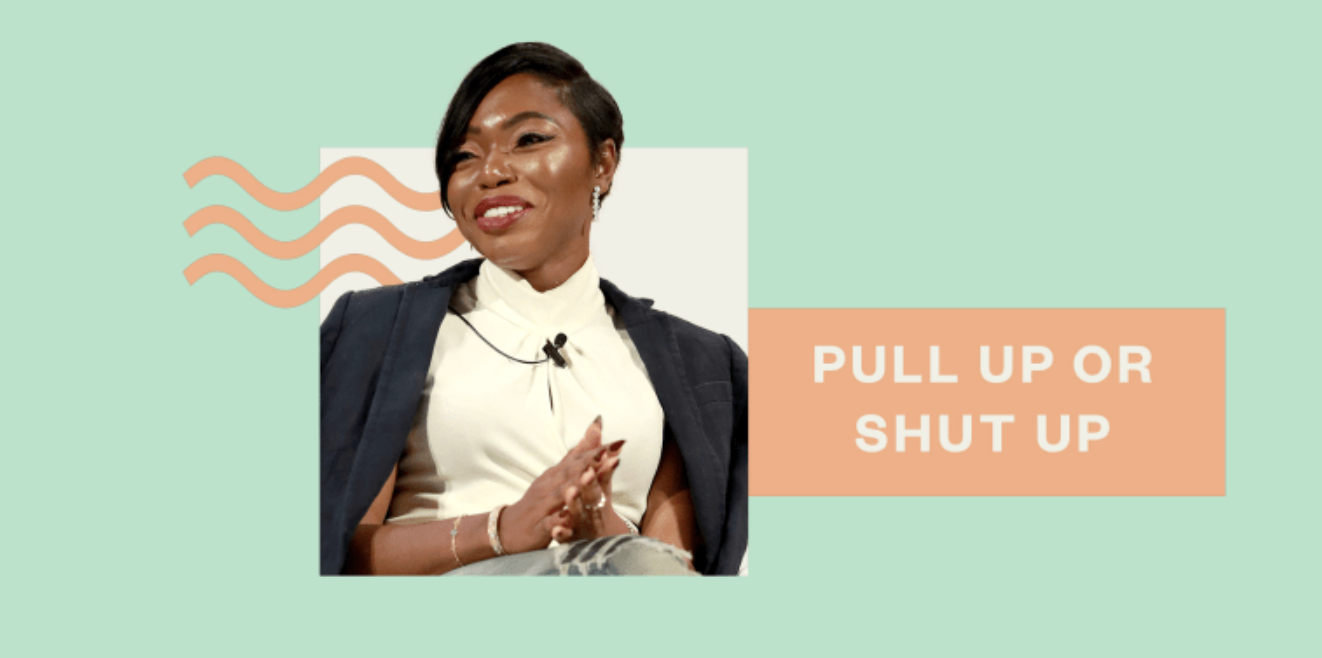
Results: 76 beauty brands pulled up within the 72-hour window: Ulta, Sephora, L’Oreal USA, Glossier, Bliss, Tarte, Revlon, Beauty Blender, e.l.f. and many more. Several celebrity-owned businesses, including Drew Barrymore's Flower Beauty, Jessica Alba's Honest Beauty, and Kylie Jenner's Kylie Cosmetics have also disclosed information about representation in their companies.
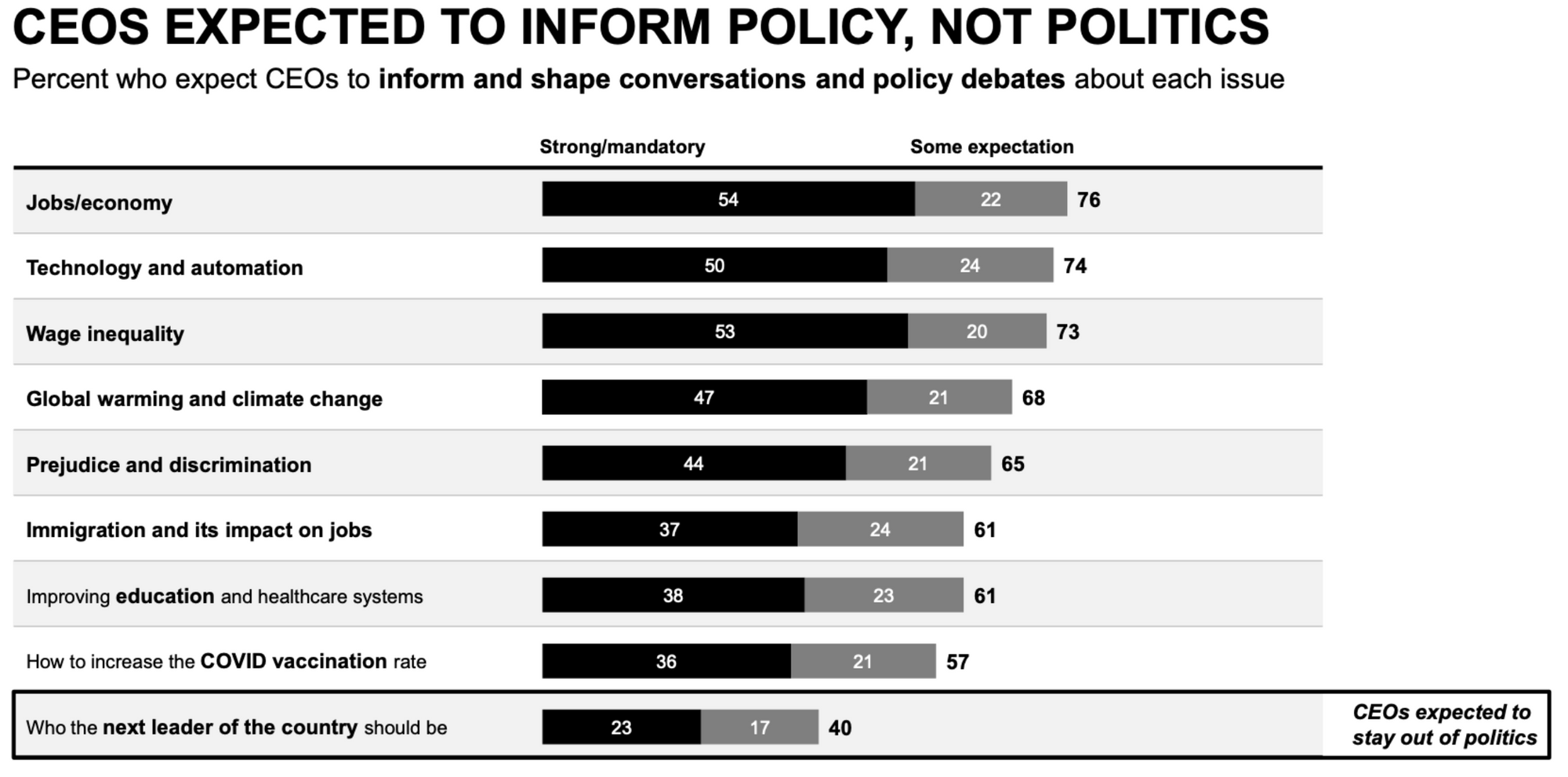
6 Tips for cause marketing and brand activism
1. Choose your cause, in-line with your brand. Consider partnering with the right non-profit organization (track records + cultural fit).
2. Set up clear and fair goals that move the needle, in terms of impact and economic performance. When partnering with a non-profit, ensure that both parties will get the most out of the collaboration.
3. Define the level and nature of your contribution. determine the resources you can deploy over the long term: from a support team, to funding a campaign, to donating a portion of sales, to giving products or services, to lobbying. Monetary contributions aren’t the only way.
4. Plan your marketing efforts. Identify how you will share the campaign with your audience and cross- promote with your non-profit partner.
5. Involve your audience. Motivate your audience to support the cause with you to help increase engagement and customer loyalty.
6. Stay the course and be a role model. The last thing you want is bad press or poor online reviews -- and that’s precisely what will happen if you abandon a social cause or leave a non-profit high and dry.
=> Define what trade-off you are ready to take: the stances adopted might restrict at 1st who you can target, partner with, and what you can do. In return, you can connect with your stakeholders on a deeper level and foster a loyalty that will keep you in business for years to come.
Examples and case studies of cause marketing and brand activism
Dove: role model in sustained cause marketing?
Real Beauty Campaign and Self-Esteem Project Project
Probably the most famous cause marketing examples in the beauty industry and beyond.
It received positive and negative feedback. Yet, it has consistently remained the brand’s strategy since 2004, with the latest 2022 campaign #DetoxYourFeed exposing the insidious nature of toxic beauty advice in teen’s feeds.
The strategy discarded the brand essence ladder typically used by Unilever and called for a POV strategy "To make women feel comfortable in the skin they are in and to create a world where beauty is a source of confidence and not anxiety.”
Real Beauty Campaign and Self-Esteem Project achievements:
- X2 Sales in 3 years (2014-2017)
- Boosted brand image (perceived as more feminine)
- Awarded #1 campaign of the 20th century by Ad Age.
- Initiated a global conversation to widen the definition of beauty and it sought to change the culture of advertising by challenging beauty stereotypes.
- By 2030, Dove will have helped build self-esteem among ¼ billion young people through their Self-Esteem Project & Fund educational programmes.
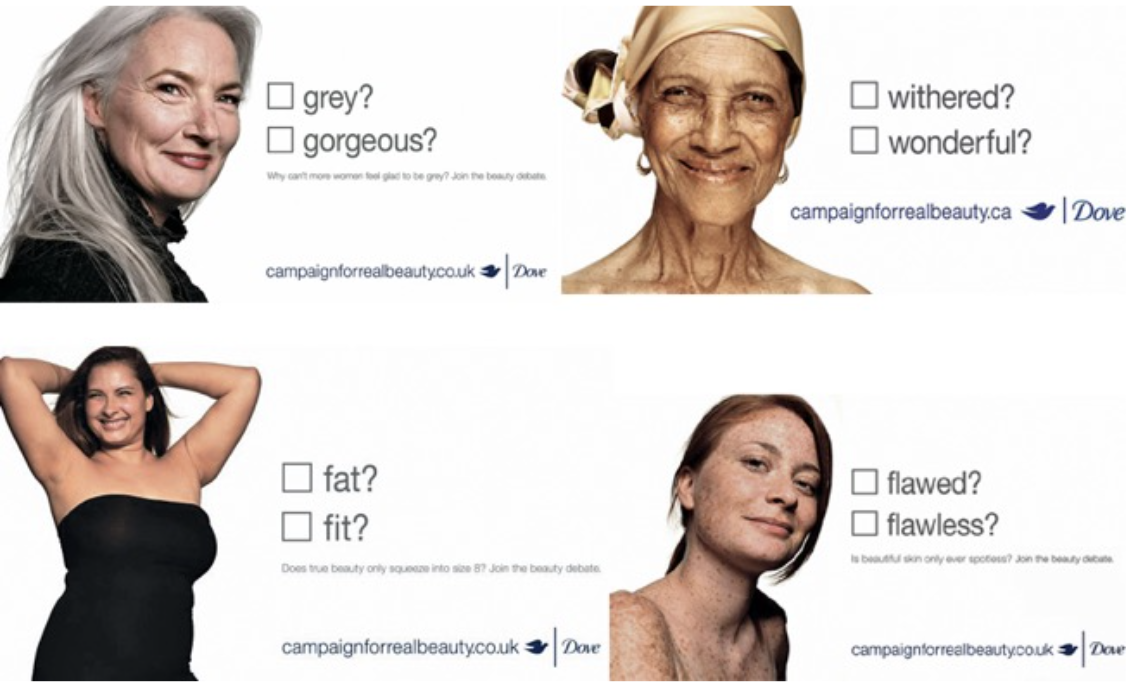
Gillette: remaining consistent while navigating criticism?
The Best Men Can Be
In 2019, Gillette decided to change their slogan “the best a man can get” to “the best men can be”, showing support for the #MeToo movement, which aims to combat sexual assault and harassment.
The short film went viral. Upon its introduction, the advertisement received praise and criticism on social media. End of 2022, it had 38M views on YT.
Critics found that the behaviours blamed on men as a whole were misdirected. Yet it was the case for the majority of older generations but not the majority of younger ones (YouGov research).
The Best Men Can Be
Until present, Gillette has remained consistent with its commitment to inspire positive change among men and boys, with concrete action.
They’ve teamed up with Equimundo, the global authority on transforming harmful gender norms, to help them deliver impact globally. As a leading partner of the Global Boyhood Initiative, established by the Kering Foundation and Equimundo, Gillette supports the development of curricula and resources that encourage boys to be healthy, emotionally connected and nonviolent.
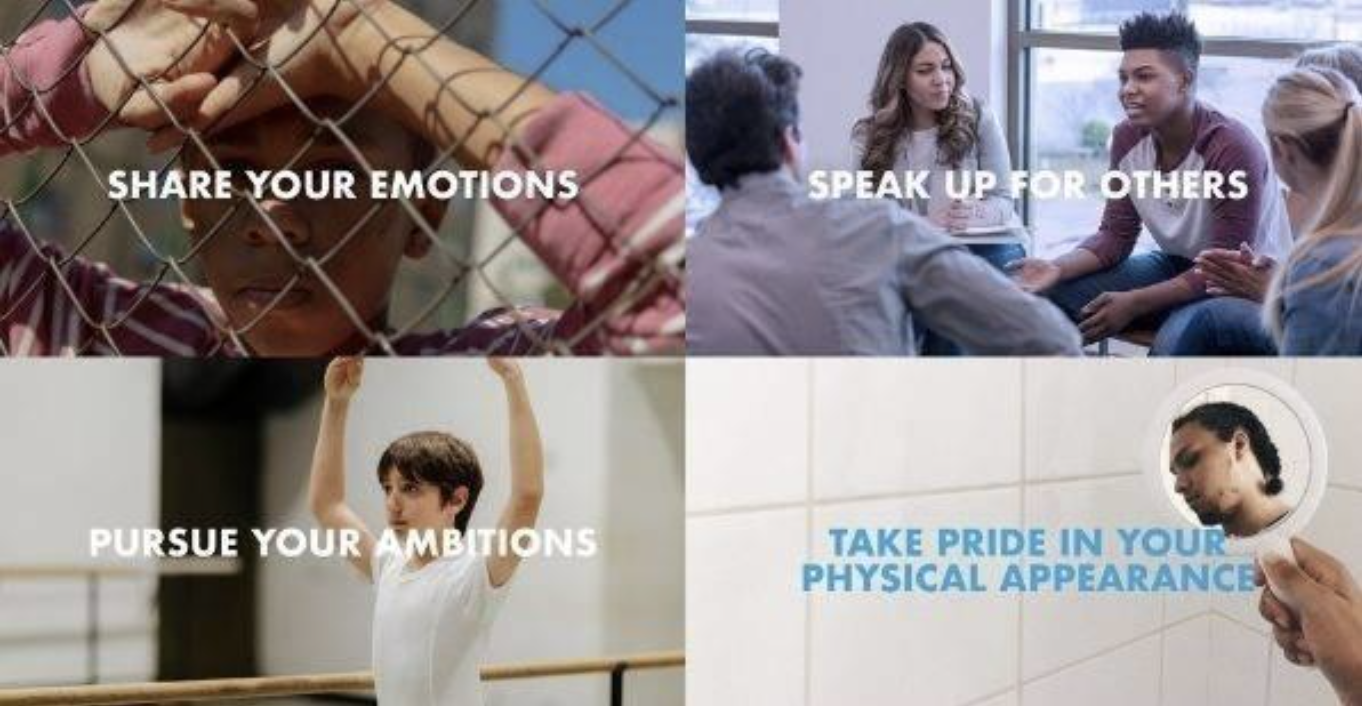
Pantene: cause marketing or simply advertising?
From #Shine Strong to “Strong is beautiful”…
2013: Pantene #ShineStrong and #WhipIt campaign against women labels started in in the Philippines then was rolled out globally.
2014: creation of the #ShineStrong Fund and partnership with leading businesswoman Karren Brady to help women reach their fullest career potential and seize hold of their dreams.
But the #ShineStrong “movement” as Pantene called it was dropped within a couple of years.
2016: Pantene launched “Strong is beautiful” campaign Dad-Do commercial with NFL players doing their daughter’s hair. Message: girls who spend quality time with their dads grow up to be stronger women.
2017” “Strong is beautiful” praised African American hair promoting its "Gold Series" line for textured hair.
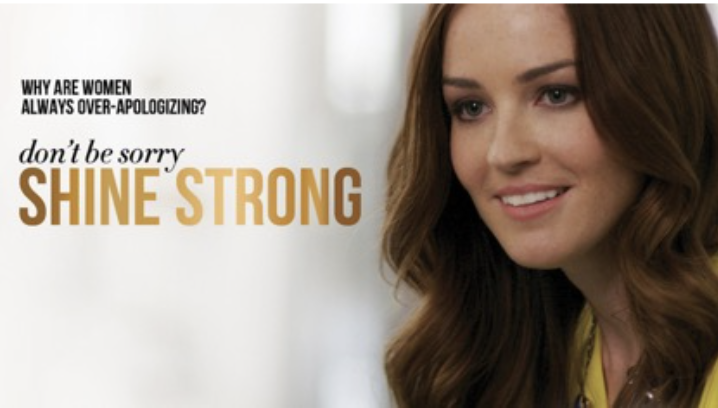
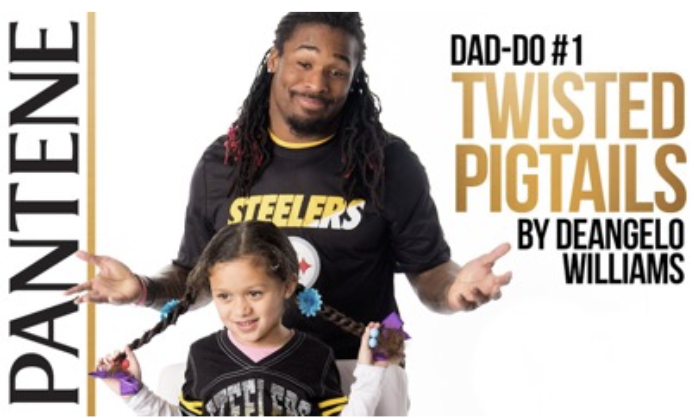
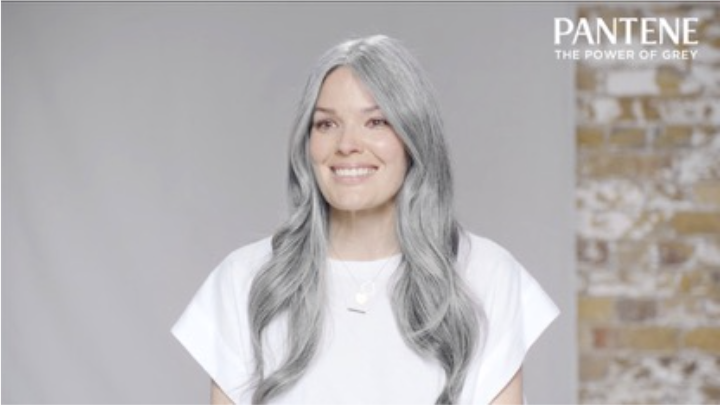
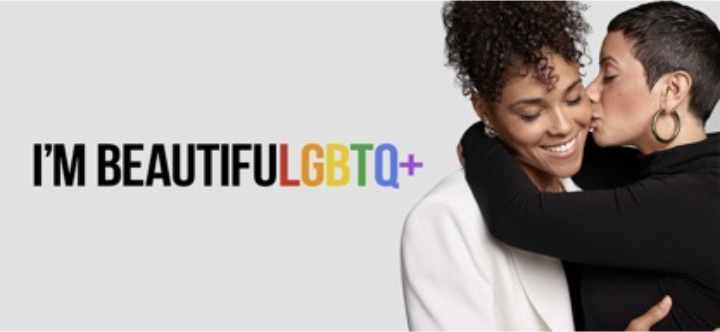
… to “Power to Transform”
2019: “Strong is Beautiful” (regular) campaign with Selena Gomez, its new ambassador
“Don’t Hate Me Because I’m BeautifuLGBTQ” campaign in partnership with GLAAD, designed to tackle conventional stereotypes and celebrate self-expression in the LGBTQ+ community.
#Powerofgrey broke beauty advertising norms by celebrating grey hair while promoting its Grey&Glowing line.
2022: #StyleWithPride iteration of #BeautifuLGBTQ+ campaign in collaboration with Getty Images and Dresscode Project to encourage real LGBTQ+ representation and self-expression through hair in marketing and advertising.
Pantene’s “Power to Transform” overarches their mission to “create the hair care to transform the okay hair days to become great hair days” along with their support to the LGBTQ+ community or female entrepreneurs.
CVS Health: cause marketing or simply PR?
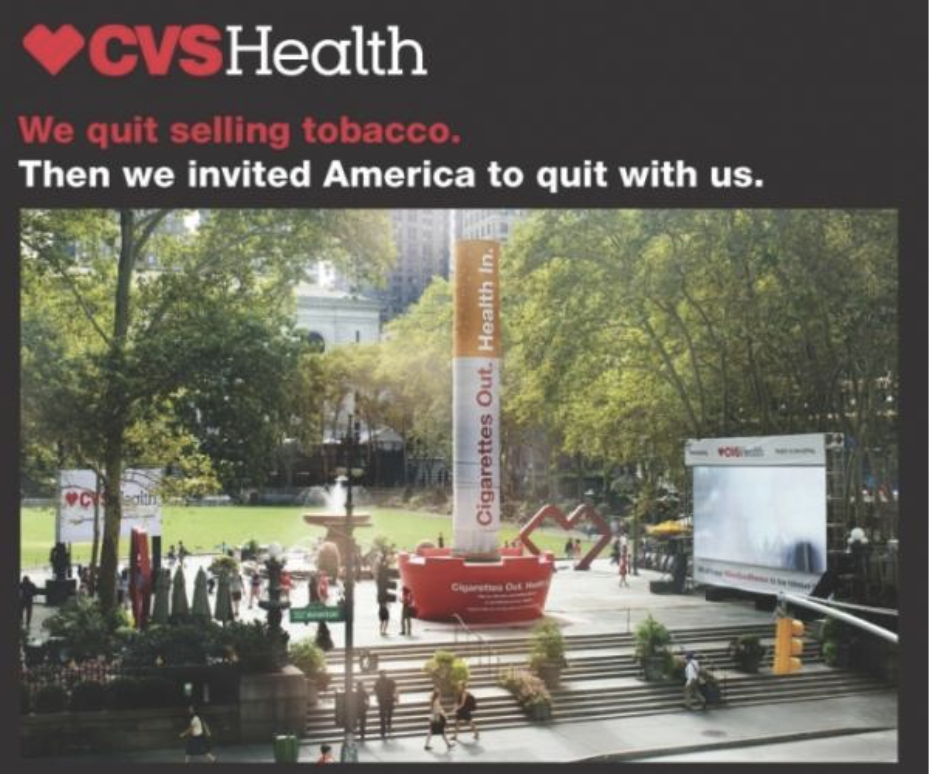
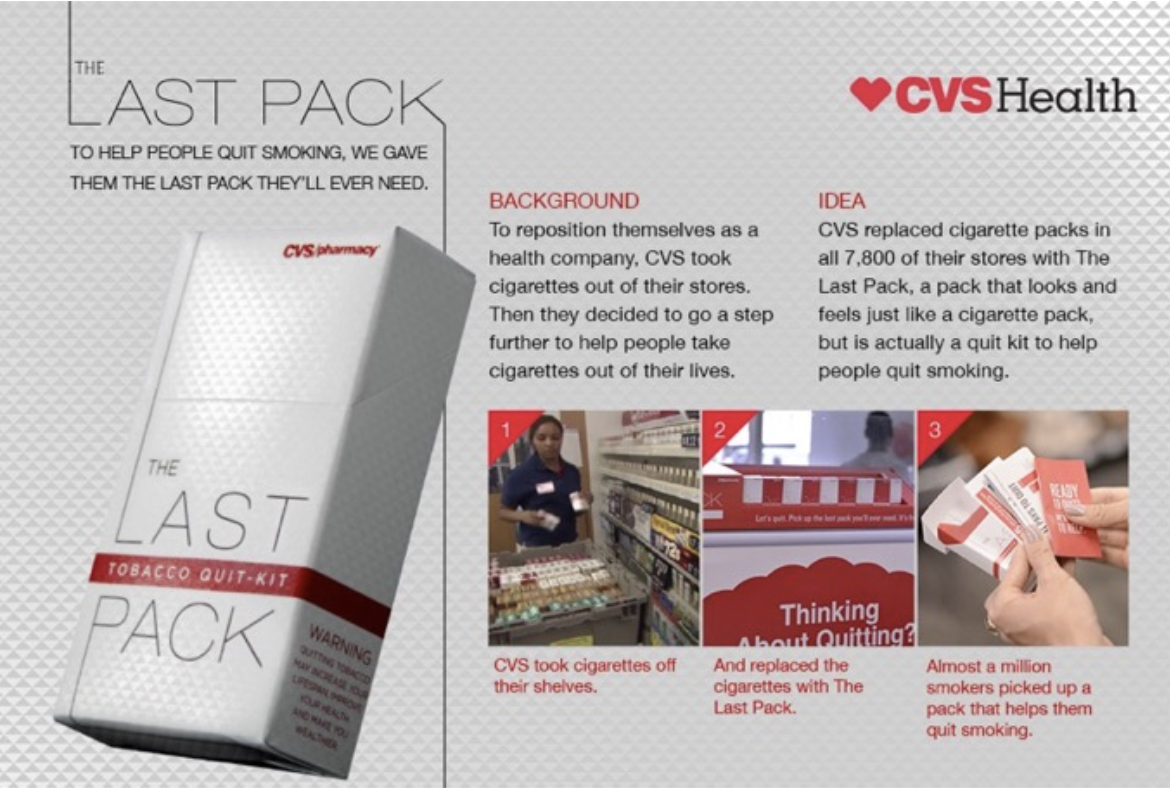
Billie: cause marketing or simply insurgent brand marketing?
Women’s razor brand Billie launched in 2017 as a subscription-based DTC. They rolled-out on Walmart.com in 2022.
What we stand for “In an industry that seemed to care only about men, Billie was created to champion womankind. Since day one, we’ve partnered with women-first organizations like Every Mother Counts, YWCA, Black Girls Code, and non-profits that specifically support Black and AAPI communities, making meaningful donations that help empower women worldwide.
At Billie, we have zero-tolerance for racism and systemic oppression. We ask that our employees, partners and even our customers, uphold these values as well <3.”
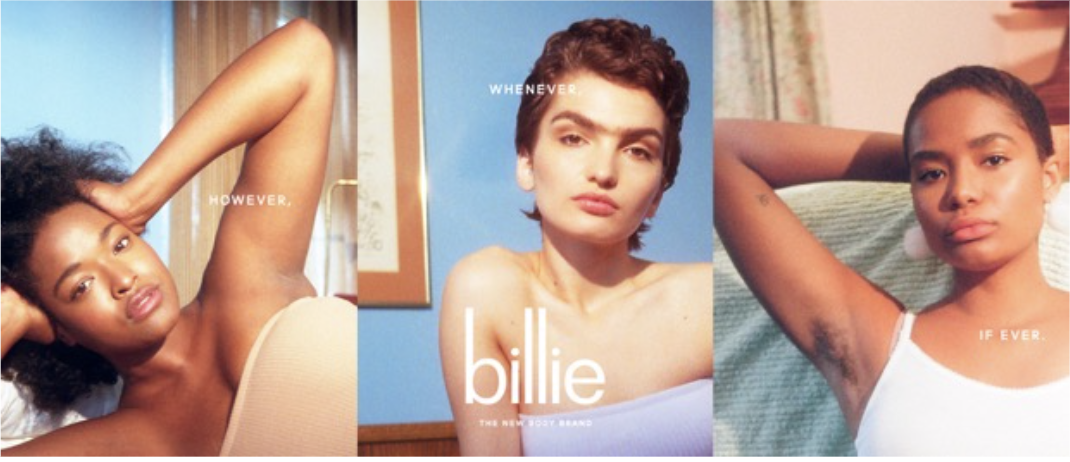
#Project Body Hair
Women’s razor brands had never shown body hair in their adverts. In 2018, Billie changed this and promoted the idea that female body hair is normal and that women should feel free to shave or not.
As a result of the campaign, they got links from Glamour and Allure (strong target affinity, SEO lever,..) They gained 65,000 followers purely via social sharing in their 1st year. The #ProjectBodyHair campaign video has amassed over 1.4 million views on YouTube by 2022.
#ProjectBodyHair IG account stopped posting in 2021. Billie IG account has been showing more cute animal hair than human body hair.
The Body Shop: pioneer in beauty brand activism
The Body Shop was founded in 1976 by Dame Anita Roddick on the core belief that business must be a force for good. It seeks to make positive change by offering high-quality, naturally inspired products produced ethically and sustainably, and by campaigning for social and environmental justice around the world.
As an activist brand , it has a full time activism team at HQ and local teams around the world dedicated to planning what, where and how they campaign. In 35 years, TBS helped eradicate animal testing in the cosmetics industry in Europe, championed the changing of laws on domestic violence and brought awareness and funding to the HIV crisis. TBS campaigned against human trafficking, the burning of the rainforest and human rights abuses in the Niger Delta among others among others.
In September 2019, The Body Shop announced its B Corp certification, joining a global community of businesses, including Natura (its parent company since 2017), demonstrating their commitment to sustainable business. Certified B Corps meet the highest standards of verified social and environmental performance to balance profit and purpose.
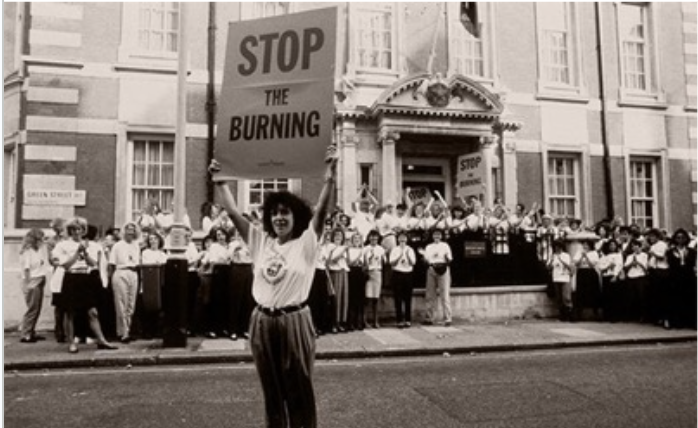
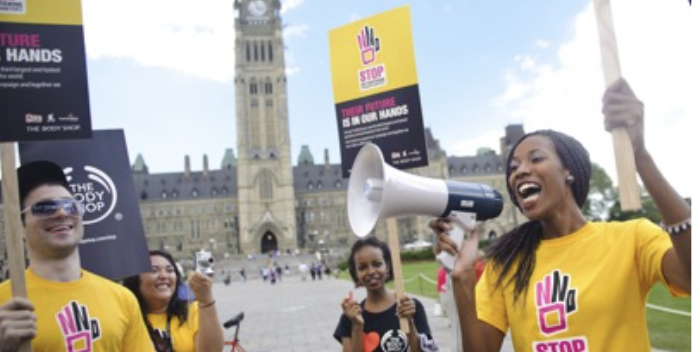
The Body's Shop global campaign: Stop Sex Trafficking of Children & Young People. The three-year campaign, which started in August 2009 and was launched in 60 countries, aims to increase awareness about the issue and raise funds for at-risk children and victims in partnership with ECPAT (End Child Prostitution, Child Pornography and Trafficking of Children for Sexual Purposes).
In 2022, The Body Shop is backing young people globally and campaigning with British Youth Council to extend the voting age to 16 years in the UK, using hashtags #VotesAt16 and #BeSeenBeHeard.
The Body Shop is working in partnership with The United Nations’ Office of the Secretary-General’s Envoy on Youth. They released a joint report, ‘Be Seen Be Heard: Understanding young people’s political participation’.
The report is a snapshot at a critical moment to understand preconceptions and structural barriers preventing young people from participating in public life, along with recommendations to address these challenges for the benefit of societies around the world.
The report includes findings from the largest-ever survey carried out by The Body Shop in December 2021, covering 26 countries with 27,043 respondents in total, over half of which were under age 30.
In June 2022 The Body Shop North America has launched a pro-2SLGBTQ+ creative campaign that opposes the Parental Rights in Education Bill passed in Florida.
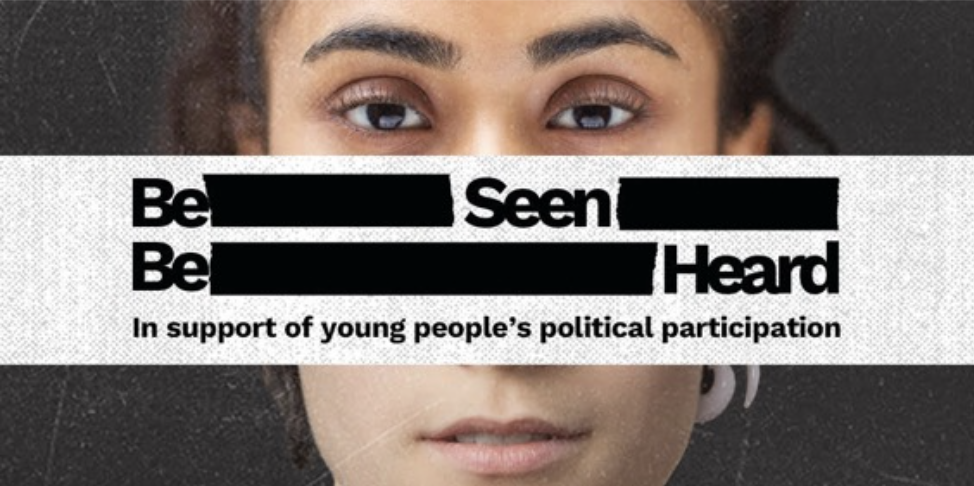
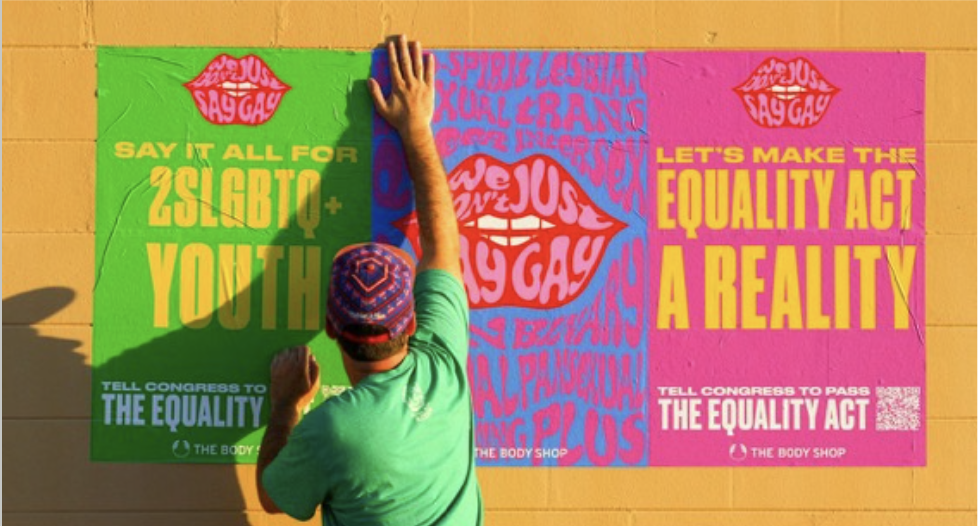
Fifteen percent pledge: pull vs push brand activism
In May 2020, amid a charged moment full of protest and awakening, Aurora James Aurora tagged on IG the world’s largest retail brands, asking them for fair Black representation on their shelves. “We represent 15% of the population and we need to represent 15% of your shelf space”
She targeted her ask (“pull brand activism”) at retailers, all with stores in Black communities and ads directed at Black people, that sell an array of products including clothing, beauty, and food. These retailers depend on the Black dollar to stay in business year after year.
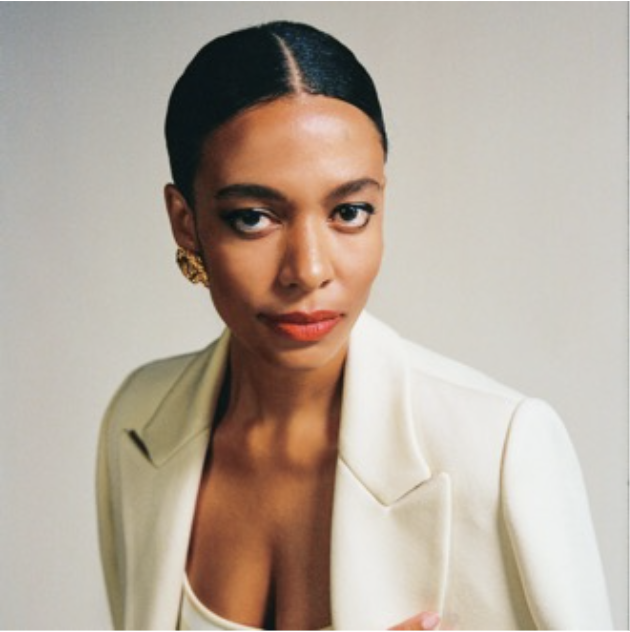
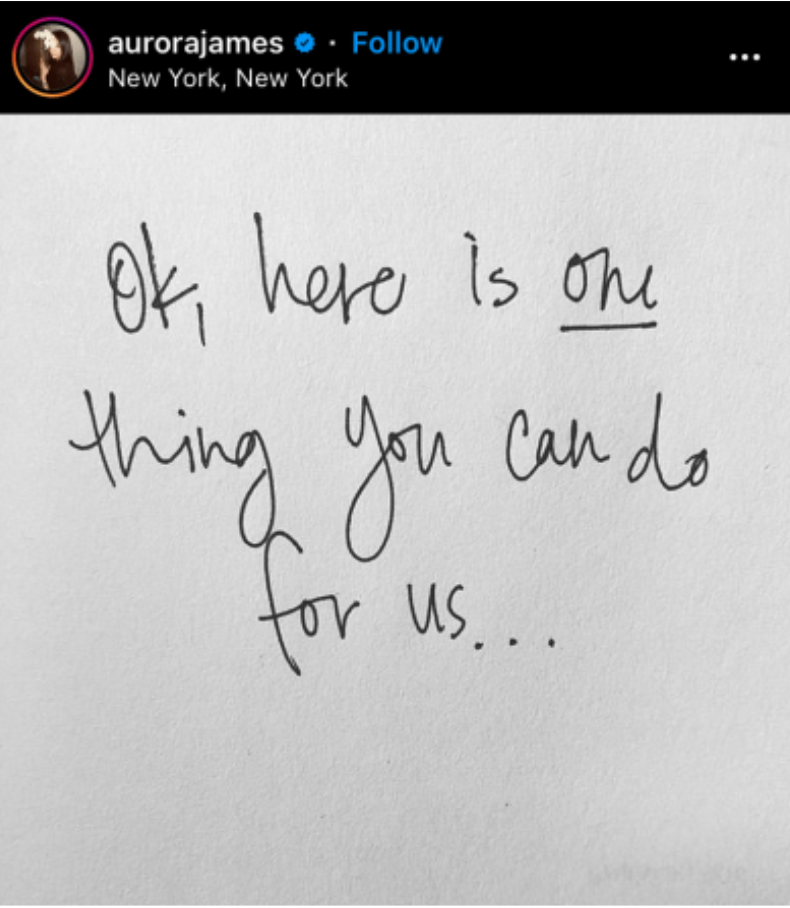
Aurora James, Founder of 15 percent pledge, Canadian creative director, activist, and fashion designer
Results:
Since that post, over 28 of the world’s most recognized retailers have taken the pledge, redirecting $10B in revenue to Black brands.
In beauty, Sephora USA pledged in June 2020, Macy’s, Bloomingdale’s and Blue Mercury in in Nov 20, and Ulta in July 2021.
15PercentPledge.org is now a platform with an expansive database of Black-owned businesses, a resource that directly lets retailers and brands connect with Black entrepreneurs.
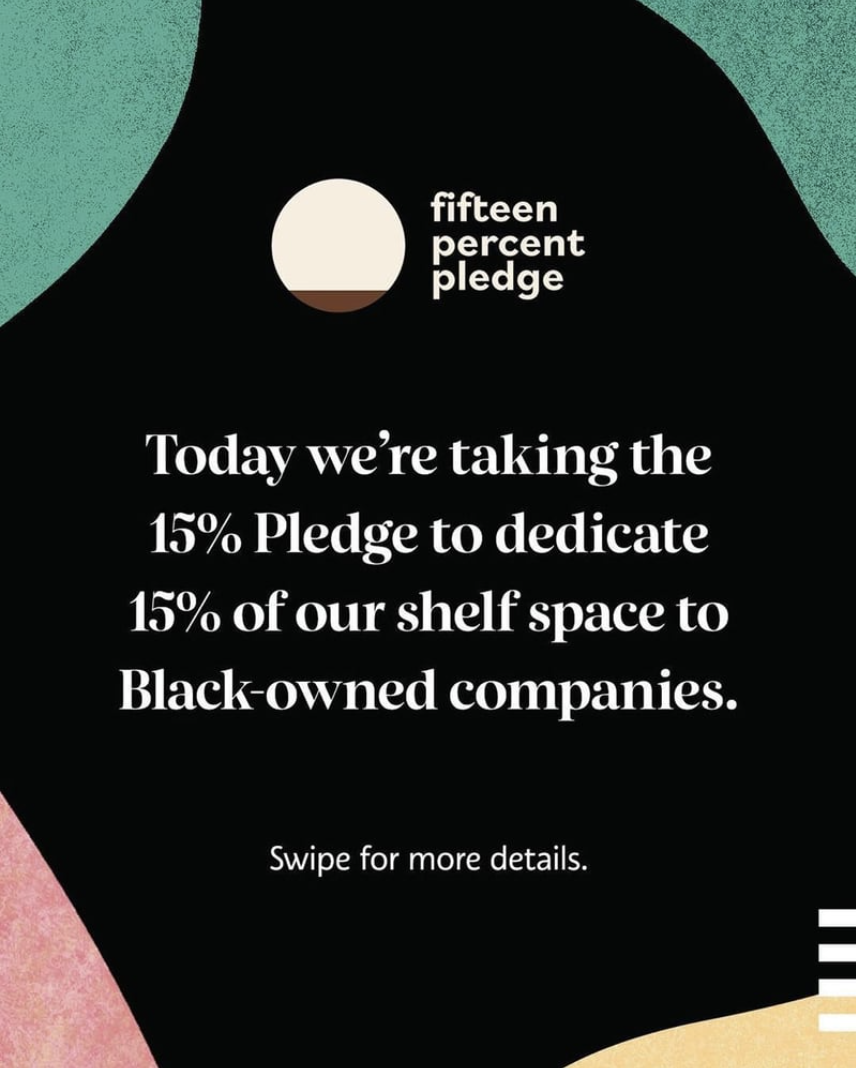
KEY TAKEAWAYS CAUSE MARKETING AND BRAND ACTIVISM
- People want to do business with and work for companies that not only stand for but also stand up for causes they care about.
- Cause marketing and brand activism have similar benefits, yet they play out differently. They come with risks and constraints which must be genuinely assumed to ripe their full benefits.
- 6 tips for cause marketing and brand activism are provided, while 7 case studies in health & beauty illustrate hits and misses.

